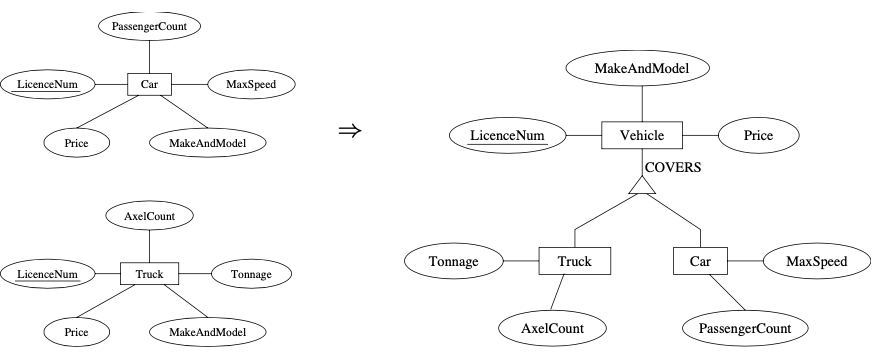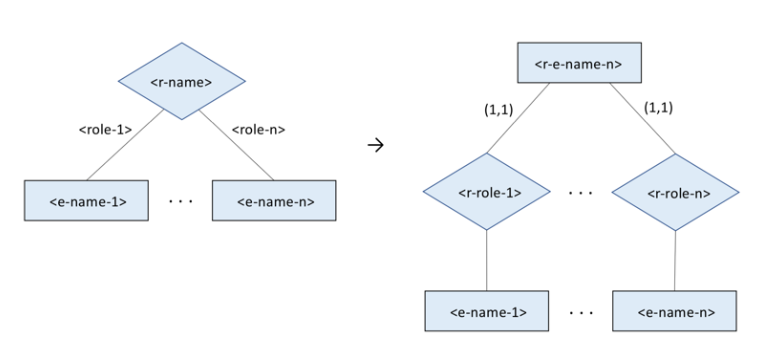Entity-Relationship Model
Captures Metadata in terms of:
- Entities
- Attributes
- Relationships
Graphical annotation:
- Entities labeled with rectangles
- attributes with circles
- relationships with a diamond
- double rectangle on existence dependencies entities
- dashed lines for weak attributes entity set
- Specialization:

Generalization:

We need role names whenever a component.
Four varieties of integrity constraints in an ER commonly expressed with graphical annotations:
- primary keys: identifies
- binary relationship types: (N:N), (N:1), (1:N), (1,1)
- existence dependencies: entities that needs another entities that exist (double on an entity set)
- general cardinality constraints: puts a lower and upper bound on number of relationships
EER Modelling
Attributes have attributes of their own
- Structured Attributes: Attributes have attributes of their own, multiple attributes
- Aggregation: the big rectangles - relationship can be aggregated to enable its relationships to be
- Specialization: entities that have their own subclass entities
- Generalization: Covers, entities that have a leas one of two or more other entity sets subsets.
- Disjointness: Overlaps,
Reification

Design Methodology
- When to introduce an attribute versus an entity set.
- When to introduce an entity set versus a relationship set.
- Choosing the arity of relationship sets.
- The use of extended features such as aggregation. ▶ Methodological considerations.
Attributes vs Entity Sets
- Maintain additional information on it
- Separate object
- Can multiple employees have diff phone numbers : Can several of its kind belong to a single entity
- Does it make sense to delete such an object
- Can it be missing from some of the entity set’s entities?
- Can it be shared by different entities?
Entities vs Relationship Sets
…